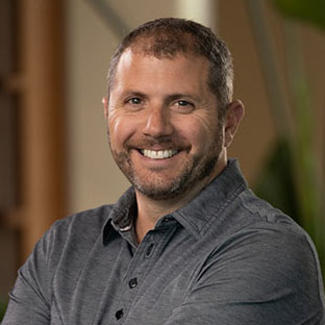Fired Up: Working with design teams in the face of labor challenges
Hi, David Vermeulen here with TGP. I’ll be taking over the Fired Up blog for Jeff Razwick, and am looking forward to discussing our industry with you in the coming months. Thanks for lending me valuable minutes out of your day.
There’s been a lot of talk about how the manufacturing and labor skills gap is affecting the glass industry, and rightly so.
Research shows there could be as many as 2 million unfilled manufacturing jobs by 2025 due to retirement and a lagging job replacement rate. While optimists like Elon Musk believe the rise of automation and robots will eventually make it easier to replace these manufacturing jobs (I’ll leave the debate on how our economy would be required to function for another day), we still have an immediate work deficit to contend with. There’s also a decline in skilled trade workers like glaziers. These specialized jobs are a craft. Their finely tuned workmanship isn’t easy to replace or replicate, but is vital to our industry.
When you pair these two workforce issues together, it doesn’t take much to see why many glass and glazing companies are re-evaluating approaches to business profitability, production cycle times and customer satisfaction.
Interestingly, among all this talk, there hasn’t been much discussion about how similar challenges in the A&D communities are impacting the glass industry. These professionals make up one of our biggest customer segments. Identifying how we can adjust our processes to best work with them as they navigate challenges in their workforce is a great way to grow and build our relationships with these key players.
A recent article in Glass Magazine pointed out a few of the noteworthy challenges these firms are facing that we should be aware of:
- An experienced generation retires and a new group arrives with different workplace expectations (don’t go pointing fingers, Simon Sinek said it first);
- The workforce transition is leading to competing priorities in project management, design and business;
- The industry has a larger than normal group of inexperienced project managers; and
- Fewer projects are coming in on or under budget.
These transitional workforce challenges create an immediate opportunity for us to step in and show our value.
For example, projects will likely have a lot more schedule variability in this transitioning workforce, particularly during the design and installation phases. While we can’t control deadlines, we can give design teams insight that will help them plan better. Will the installation need custom onsite work? Is there any needed product testing? Are there code compliance issues that the firm needs to be aware of and address that are within your company’s field of expertise? The more we can do to prevent surprises and the resulting project delays, the more likely we will deliver the expected results and find firms becoming repeat customers.
Budgets are a challenging and complex issue, but here, too, I think we can really show our value. Glass is featured prominently in many buildings and accounts for a growing amount of the project budget, particularly if the installation is complex or requires specialized glazing products. One of the first things we have to get right is not cutting corners and using a product that doesn’t fully meet the firm’s project goals to save on costs. That said, there are many ways to give the design team what they want and leverage our expertise to help them stay within budget.
While collaboration and budget support are just a few of the ways we can step in and help design teams in the face of their labor challenges, they represent opportunities for growth. Of course, developing good relationships with the architecture and engineering communities takes a lot more time and effort than simply understanding the ins and outs of their workforce. But, the better we understand them, the better we can position ourselves to be an asset to them.
David Vermeulen is the national sales manager for Technical Glass Products, a supplier of fire-rated glass and framing systems, and other specialty architectural glazing. TGP works closely with architects, designers and other building professionals, providing them with the state-of-the-art products, service and support to maximize design aesthetics and safety in commercial and institutional buildings around the world. Contact him at 800/426-0279.
The opinions expressed here are those of the individual author and do not necessarily reflect those of the National Glass Association, Glass Magazine editors, or other glassblog contributors.


